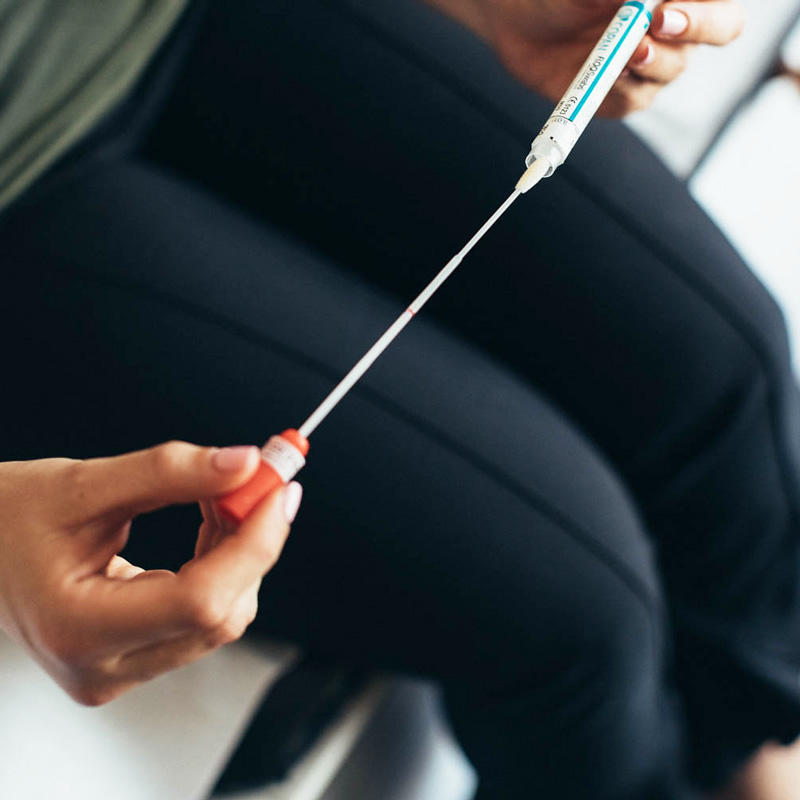Cervical screening self-collection
What is self-collection?
Self-collection means a person takes their own vaginal sample for testing.
From 1 July 2022, all women and people with a cervix aged 25-74 will have two options for having a Cervical Screening Test.
One option is to have a healthcare provider collect your sample. The other option is to collect your own sample.
How does self-collection work?

If you're interested in self-collection, talk to your doctor or nurse to find out more.
You will be given a swab, instructions and a private place (behind a screen or in a separate room) where you can take your sample.
You take your sample using a long cotton swab self-inserted a few centimetres into your vagina. You will be given instructions about how to collect the sample by your doctor or nurse.
The sample will be sent to the laboratory and your doctor or nurse will talk to you about your results.
It's best if you take your sample at the clinic so that the doctor or nurse can send it straight away to the laboratory for testing.
However, if you prefer you can ask your doctor or nurse if you can take the swab away and can collect your sample at home. If you choose to do this, you will need to return your swab as per the instructions to your doctor or nurse as soon as possible so that they can send your sample to the laboratory.
What happens if I self-collect and the result comes back positive?
If human papillomavirus (HPV) is detected in your self-collected sample, depending on the type of HPV, you will either need to return to have a sample of cells taken from your cervix by your doctor or nurse or you will be referred directly to a specialist for further tests or treatment.
Learn more about what your screening test results mean >
Is my self-collected sample as accurate as one taken by my doctor or nurse?
Yes. A self-collected sample is just as safe, effective and accurate as a sample collected by a doctor or nurse. HPV can be found just as well in samples from either your cervix or your vagina.
Why should you book your Cervical Screening Test?
More than 70% of cervical cancers occurred in women who have never been screened or are not up-to-date with their cervical screening.[1]
More information for health professionals and pathology labs
See our self-collection messages to support promotion, awareness and education of the self-collection eligibility expansion.
Related pages
1. Australian Institute of Health and Welfare 2020. National Cervical Screening Program monitoring report 2020. Cancer series 130. Cat. no. CAN 138. Canberra: AIHW. https://www.aihw.gov.au/getmedia/dfb6c1fa–to6c45–to45de-a513–to0f13a3739a53/aihw-can–to138.pdf.aspx









